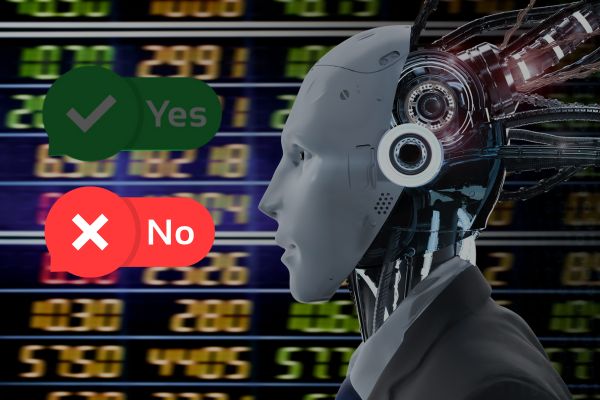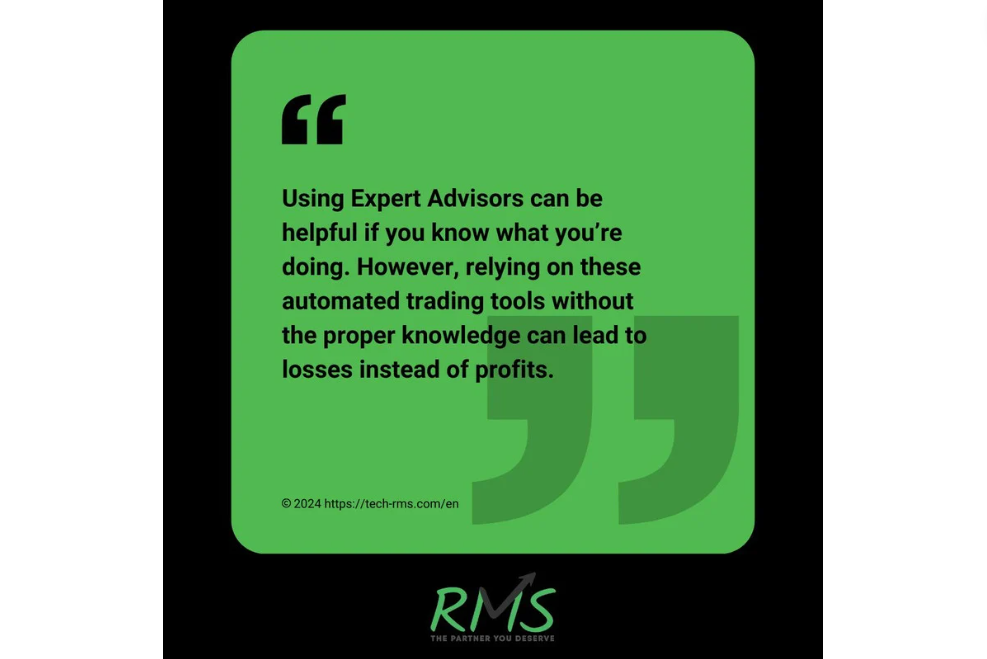
Trading robots, also called Expert Advisors (EAs), are not infallible. An expert advisor is only as good as its programmed instructions and algorithms.
Blindly trusting an automated trading program can lead to trading losses you could have easily avoided. In addition to placing too much faith in an EA’s capabilities, traders often commit other errors when using them.
If you want to maximize your profits using a trading robot, avoid these common mistakes when using Expert Advisors. Instead, learn and follow the best practices when using EAs.
What Is an Expert Advisor?
An Expert Advisor is an automated trading program you can use to manage and even execute trades on your behalf.
EAs follow pre-programmed instructions that determine how they manage and execute your trades. These instructions use complex mathematical formulas and algorithms, earning the practice the label “algorithmic trading.”
Besides automating the management of your trades, Expert Advisors generate trading signals that help traders make better-informed trading decisions. These trading robots can generate trading signals by analyzing market data and identifying existing patterns.
Common Mistakes of Traders When Using Expert Advisors

Below are some of the most common mistakes traders make when using EAs.
1. Overreliance on Expert Advisors
One of the biggest mistakes traders make when automating their trades is thinking that an EA can do everything for them. Despite the usefulness of Expert Advisors, these automated trading programs can and do make mistakes.It’s crucial that you understand how EAs work before you start automating your trades. You must have a solid understanding of the underlying trading strategies and algorithms that dictate how your automated trading program works.
You should only entrust your trades to an Expert Advisor if you know how exactly it manages your trading positions.
2. Not Backtesting or Forward Testing
Backtesting is a vital part of ensuring the effectiveness of your automated trading program.Using historical market data, you can see how your EA would have performed in the past and gauge its performance in similar future scenarios. Backtesting also allows you to determine the Expert Advisor’s areas of improvement and make the necessary adjustments.
Forward testing—testing how the EA performs using live market data—is equally important. It lets you test and confirm the validity of the backtesting results.
This comprehensive approach to validating the effectiveness of your EA can help you see how it would perform in market conditions that weren’t part of its strategy development.
3. Over-optimizing the Expert Advisor
While optimizing your Expert Advisor is good advice, overdoing it can produce the opposite results. Over-optimization—also called overfitting or curve-fitting—is a common pitfall when improving an EA’s performance.By tweaking your EA’s settings to optimize its performance in past market conditions, you may inadvertently make it perform worse in live markets.
Overfitting your EA to give the ideal entry and exit points using historic market data can limit its potential when performing in live market environments.
You should try to find a good balance between optimal performance in past market conditions and the flexibility to adapt to live ones.
4. Neglecting Risk Management
Automating your trade shouldn’t mean neglecting risk management measures. If anything, you should pay more attention to risk management when using EAs, as you are handing over autonomy for efficiency.
Failing to take precautions against unpredictable phenomena that can affect market conditions (e.g., market news and volatility) is akin to setting yourself up for future losses.
5. Not Monitoring the EA
Expert Advisors are designed to manage and execute your trades automatically. However, it doesn’t mean you can just forget about them after the initial set up.As stated earlier, EAs lack the adaptability of human traders. Keeping an eye on your Expert Advisor’s performance can help you make necessary adjustments to ensure your EA’s optimal performance regardless of the market conditions.
How Can You Avoid These Mistakes When Using EAs?
The first step to avoiding common mistakes when using Expert Advisors is to be aware of them.
Knowing the ways an EA can experience lapses in “judgment” allows you to take proactive steps to prevent them.
Another way to avoid these errors is to prioritize risk management. By taking the necessary precautions (e.g., using stop-loss and take-profit orders), you can minimize—or outright avoid—the risks usually associated with automated trading.

How to Choose the Best Expert Advisor
One of the most important factors to consider when choosing which Expert Advisor to use is the EA’s track record.
Always check the internet for records showing your potential EA’s performance (whether through back- or forward testing). If you can’t find any, ask the EA’s vendor to let you run the software's back- and forward-testing to ensure its performance aligns with your expectations.
If you’re looking for the best Expert Advisor to automate your trades, look no further than TradeBot, Tech-RMS’ proprietary automated trading program.
Powered by artificial intelligence (AI), TradeBot is designed to adjust its trading strategies dynamically to current market conditions, helping you remain on top of even the most volatile markets.
